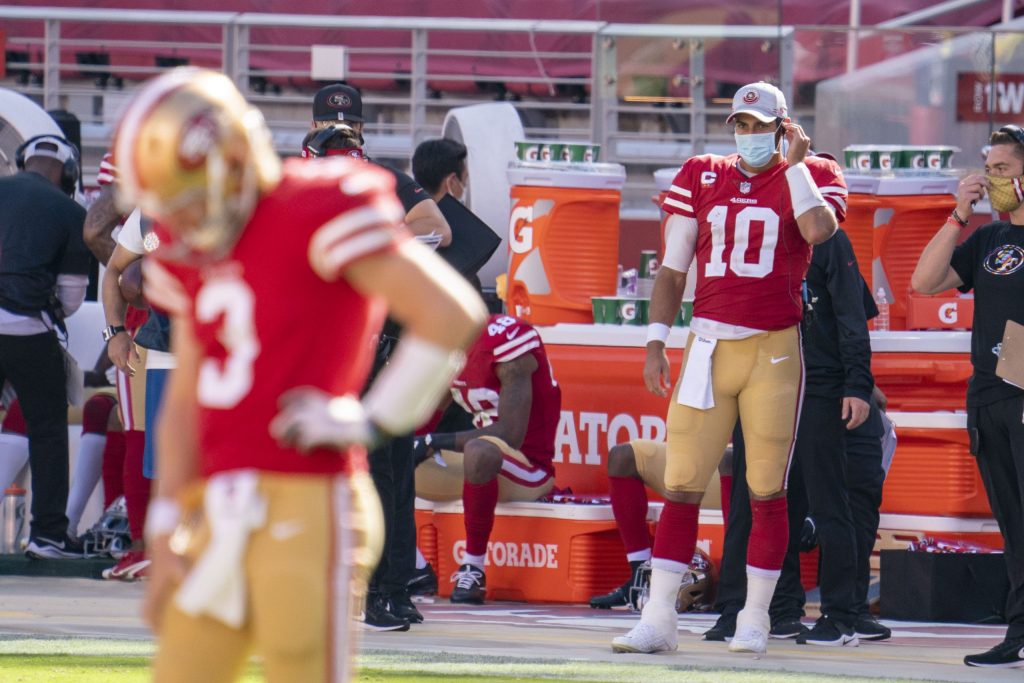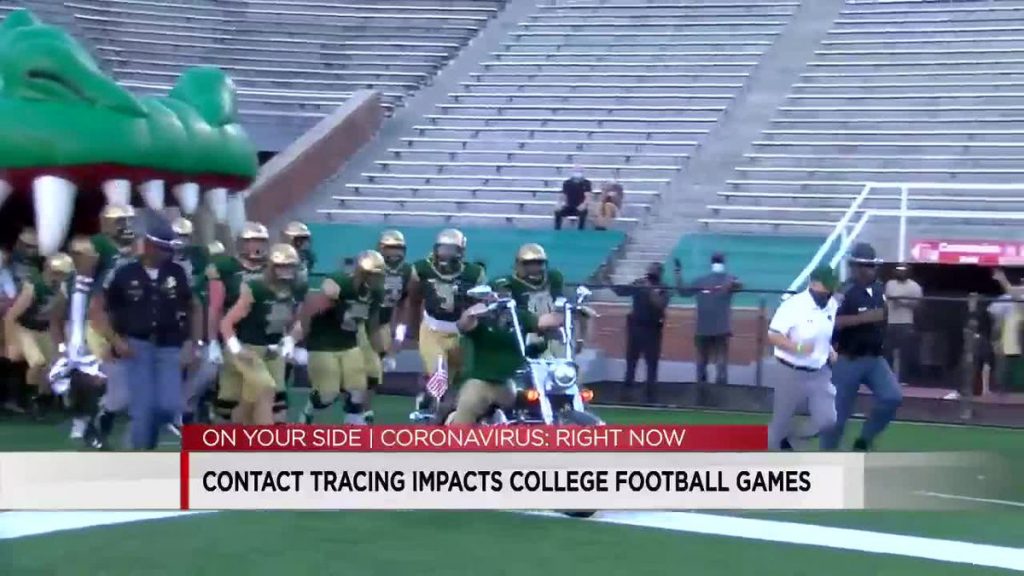By Bill Rice, Jr.
There’s no doubt about it; I’m different than most people. This thought has been reinforced in me as I’ve been observing one of the latest media-produced narratives—the “chaos” in college football caused by the numerous games that have been cancelled “because of COVID.”
I’m pretty certain most people believe these games were cancelled because of the “health and safety risks” COVID poses to college football players.
The reason I’m different is because I read the same stories and listen to the same sports talk programs yet reach a completely different conclusion: These games were actually cancelled because of the unnecessary and dumb policies that bureaucrats and authorities created to (purportedly) mitigate these risks.
For me anyway, this distinction is hugely important even though I recognize that probably 98 percent of Americans don’t view this issue as I do: a sneaky way for authorities to further flex their bureaucratic muscles.
The “college-football-has-plunged-into-chaos” story also caused me to reflect on the central role bureaucrats, politicians, and the media play in defining the way Americans think about just about every subject.
Please cite your evidence
As anyone who has done any COVID research should have known months ago, COVID-19 poses virtually no health and safety risk to young Americans, especially well-conditioned athletes.
Since this semester started in August, only three college students (none participating in the sport of football) have died from or with COVID. Since there are approximately 20 million American college students, this means the odds that a college student will die from COVID are one in 6.667 million.
Furthermore, virtually no college student has even been hospitalized due to complications from COVID-19.
Author and journalist Andrew Bostom has been tracking college deaths and hospitalizations at 50 colleges. Per Boston’s update of Oct. 5, only three students at these 50 colleges had to be hospitalized due to COVID complications. (There have been no student deaths from COVID at these campuses.)
The vast majority of young Americans who test positive for COVID don’t even become sick. That is, they are asymptomatic.
For example, of the approximately 35,000 students at the University of Alabama who have been tested for COVID-19, only 20 to 25 percent actually had symptoms, according to the University’s Dean of Health. Of the small percentage who did experience symptoms, "very few" had significant symptoms. So from this sizable sample, we learned that 75-80 percent of the students who tested positive were asymptomatic (read: they weren’t sick.)
Additionally, among the athletes who do contract the virus, 99.99 percent seem to recover as if nothing ever happened to them. Dustin Johnson just set the record for the lowest score at The Masters golf tournament a month after testing positive for COVID-19.
But it’s not the positive cases among athletes that have created the chaos in college football, it’s the nonsensical and completely unnecessary contact tracing protocols that have decimated rosters.
Because of these league-created protocols anyone who spent 15 to 30 minutes near a person who tested positive MUST quarantine for 14 days (21 days in the Big 10).
Mind you, these are completely healthy, young athletes with no symptoms who came in contact with teammates or coaches. But because the protocols must be adhered to, these student athletes are forced to spend 14 to 21 days in their dorm rooms or apartments playing video games and eating cans of Ravioli that friends were kind enough to leave outside their doors.
We now know from months of statistics that none of these student athletes would die or be hospitalized had they been allowed to play football. Almost everyone would be back playing in 10 days (not the 14- or 21-day sentence that victims of contact tracing must serve.)
High school football proves the absence of health risks
Actually, we already know what would happen if the SEC and Big 10’s ultra-stringent safety protocols had never been created or zealously enforced: The college football season would have played out exactly like the high school football season played out.
In my state of Alabama, high schools are entering the fourth round of the playoffs. Division I college football has 130 teams. The NFL has another 32. Just in the state of Alabama, approximately 400 high schools field football teams.
If on average, each of these teams has 40 players, that’s approximately 16,000 athletes, all of whom began practicing football in early August and began playing games in late August. Some teams in the playoffs are getting ready to play their 14th game.
If we include all the other states that did not cancel their football seasons, we have another case study of massive size, one where it’s possible to examine actual health impacts on football players.
When it comes to assessing the health and safety risks of athletes due to COVID-19 complications (in a rational world) two questions would carry the greatest weight: How many of these athletes died; and how many athletes became sick enough to have to be hospitalized? As far as I am aware, at least among high schools and colleges, the answer to both of these common sense questions is ZERO.
So what did high schools do differently than the colleges and pros? For one thing, they didn’t test every athlete four times a week (they couldn’t afford this). For the most part, only those athletes who actually experienced COVID symptoms received tests.
Based on the observable FACT that tens of thousands of high school games have already been played in the middle of this pandemic, one can now reach at least two self-evident conclusions:
- The health and safety of young athletes is not jeopardized by playing and practicing football.
- The super stringent protocols being used by colleges and the NFL aren’t necessary at all.
As it turns out, all that’s really needed to play the sport of football without putting any participant's health at risk is to require those athletes who do show symptoms, and then test positive, to quarantine for 10 days.
Again, it is the protocols, not the virus that has made playing the college football season, in the opinion of some journalists, a “disaster.” If college football has been such a disaster, was high school football also a disaster? If so, what exactly is the definition of a medical disaster?
 If a medical emergency has now become defined as one where no member of a specified group has died and nobody in the same group has been hospitalized (and almost nobody develops even mild symptoms) we have all fallen into Alice’s Rabbit Hole.
If a medical emergency has now become defined as one where no member of a specified group has died and nobody in the same group has been hospitalized (and almost nobody develops even mild symptoms) we have all fallen into Alice’s Rabbit Hole.
Authorities will create mandates and protocols
My COVID football example actually illustrates a larger and more important point. Namely, it’s officials, authorities and bureaucrats who frame the narrative that ends up controlling our lives. Invariably, these officials have acted in response to fear-producing story lines pushed by alleged or dubious experts.
Here’s how this works. Private citizens or members of different organizations, for various reasons, decide to create associations to govern their members. Once the leaders of these organizations have established their power base, they spring into action to justify their existence. Fear—or any “crisis”—gives them the perfect excuse to exert their control.
Someone has to protect the people, and, by God, these people will do it. By now, most Americans don’t give a second thought to this process. If the authorities and experts say something must be done, then it must to be done. Just as there’s no crying allowed in baseball, there’s no questioning allowed when it comes to the protocols and mandates.
If the Big 10 Commissioner—after consulting with the presidents of the Big 10 schools and their medical experts—say football cannot be played unless these 300 pages of mandates and guidelines are strictly followed, then that’s the way things will be done.
We see the same reality, not just in sports, but in damn near everything
If the government says we must have 10 percent ethanol in our gasoline to "protect the environment,” well, OK then. If the government says we can no longer use the light bulbs we used for seven decades, we shrug our shoulders and buy the more expensive ones we’re told we must use.
If a president, the media and all the think tanks say our military has to invade and occupy certain Third World countries to protect our national security and/or our freedom, most of us salute and say, “Fine, let’s do it.”
As for those odd curmudgeons like myself—the contrarians who insist that none of these things actually HAD to happen—we can vent and write essays with the hope that some news organization with a large number of readers still publishes stories that dissent from conventional wisdom.
In reality, it wasn’t COVID-19 that caused this and scores of other games to be cancelled. It was virtue-signaling, group-thinking busy bodies—the same people who came up with these unnecessary protocols, and then enforce them with maniacal fervor—that caused these games to be cancelled.
I’ll probably be called a nutcase for saying this, but what the hell. The old normal, the one where our lives were not increasingly dominated by specious mandates and protocols that most of us now accept with no questions asked, was a better and happier place.
Bill Rice, Jr. is a freelance writer in Troy, Alabama. He can be reached by email at wjricejunior@gmail.com.




